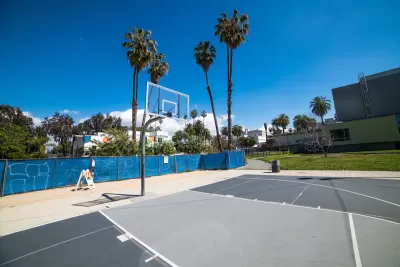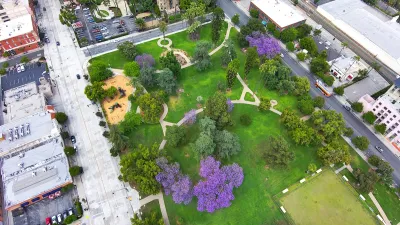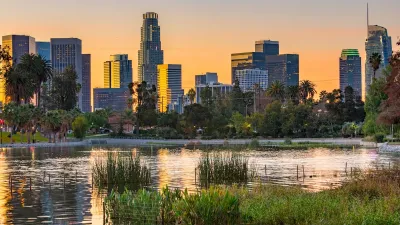The Los Angeles Clippers Foundation (LACF) is working with the L.A. County Department of Parks and Recreation to upgrade indoor and outdoor basketball courts across the county.

The Los Angeles County Department of Parks and Recreation (DPR) recently partnered with the Los Angeles Clippers Foundation (LACF) to upgrade indoor and outdoor basketball courts at county parks. LACF is a non-profit organization, established in 1994 by the L.A. Clippers professional basketball team, to promote positive educational, environmental, and humanitarian values through community-outreach events and programming. For several years, LACF has supported DPR with uniform donations and sponsoring the Jr. Clipper Youth Basketball Program, with over 3,000 players participating in DPR basketball leagues, and over 100,000 youth program-wide across Southern California.
The latest partnership with DPR involves LACF donating $5.3 million to the Los Angeles County Parks Foundation (LACPF) to fund the Clippers Community Courts program, a countywide initiative to refurbish and improve all 117 basketball courts operated by DPR. These courts are located at 60 parks countywide, including many in park-poor neighborhoods that are lacking in quality recreational facilities and programs. This effort builds upon the work that LACF did in the city of Los Angeles, which included renovations of 350 public basketball courts, and took four years to complete.
L.A. Clippers star Russell Westbrook was on hand to celebrate the upgraded basketball courts at Jesse Owens Park in South Los Angeles where he learned the fundamentals of the game in his youth.
FULL STORY: Clippers Foundation, Russell Westbrook, and LA County Celebrate Refurbished Courts

Trump Administration Could Effectively End Housing Voucher Program
Federal officials are eyeing major cuts to the Section 8 program that helps millions of low-income households pay rent.

Planetizen Federal Action Tracker
A weekly monitor of how Trump’s orders and actions are impacting planners and planning in America.

Ken Jennings Launches Transit Web Series
The Jeopardy champ wants you to ride public transit.

California Invests Additional $5M in Electric School Buses
The state wants to electrify all of its school bus fleets by 2035.

Austin Launches $2M Homelessness Prevention Fund
A new grant program from the city’s Homeless Strategy Office will fund rental assistance and supportive services.

Alabama School Forestry Initiative Brings Trees to Schoolyards
Trees can improve physical and mental health for students and commnity members.
Urban Design for Planners 1: Software Tools
This six-course series explores essential urban design concepts using open source software and equips planners with the tools they need to participate fully in the urban design process.
Planning for Universal Design
Learn the tools for implementing Universal Design in planning regulations.
Ada County Highway District
Clanton & Associates, Inc.
Jessamine County Fiscal Court
Institute for Housing and Urban Development Studies (IHS)
City of Grandview
Harvard GSD Executive Education
Toledo-Lucas County Plan Commissions
Salt Lake City
NYU Wagner Graduate School of Public Service





























